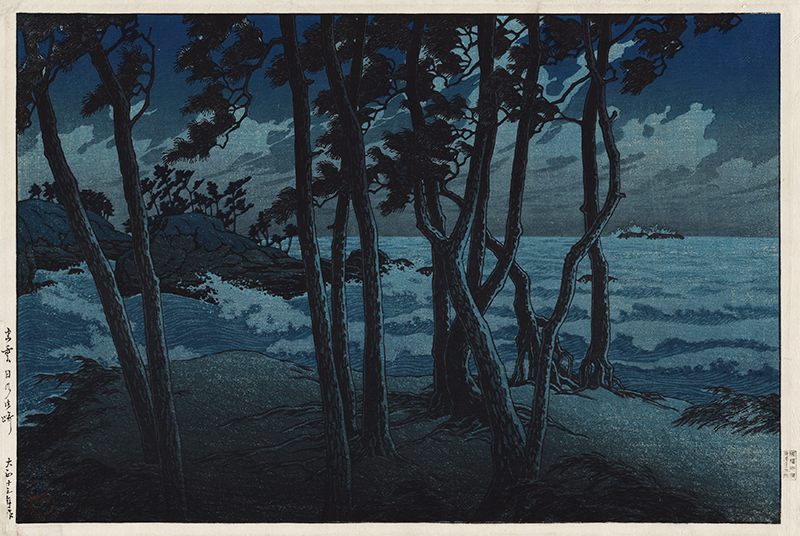
19th, 20th & 21st Century Fine Prints
707-546-7352 · fax 707-546-7924 · web: www.annexgalleries.com · email: artannex@aol.com
Hinomisaki, Izumo - from Souvenirs of Travel, Third Series by Kawase Hasui



Hinomisaki, Izumo - from Souvenirs of Travel, Third Series
Kawase Hasui
Hinomisaki, Izumo - from Souvenirs of Travel, Third Series
Kawase Hasui
1883 - 1957 (biography)From Kawase Hasui's series "Souvenirs of Travel, 3rd series", this woodcut in blue inks captures twilight over the coast of the san-in (shadow) side of Izumo, now a part of current-day Shimane prefecture. His choice of a nearly entirely blue composition harkens to the aizuri-e prints of 1820s Japan made popular by Hokusai, Keisai Kunisada, and Utagawa Sadahide. Using the Prussian blue ink introduced by European traders, Japanese printmakers found the new blue more desireable for its superior tonal qualities and fade-resistance, as compared to that of indigo ink. While it's not certain that Hasui used Prussian blue in this work, the color is rich and clean and exhibits no fading.
Another woodcut in Hasui's "Travel" series utilizes the same blocks but incorporates daylight colors, more akin to his usual imagery. This print's moody tones therefor make it a rare and unusual piece, not relying on the dazzle of many colors but instead inviting the viewer to look closer at the scene, to absord the atmosphere and take in the movement of the waves and the bending of the pines in the wind.
Accompanying this piece is the 1934 label from the original American dealer. Based in San Francisco, Roy Vernon Sowers Fine Press and Rare Books was a reputed antique book, print, and Japanese woodcut shop for several decades. The label reads: "Dear Miss Cochran: The name of the artist who made your print is Hasui, one of the best of present day Japanese wood cut engravers. Yours sincerely, Caroll D. Hall."

